Editor’s Note: This article was originally published in Overland Journal, Fall 2016.
As travelers we tend to bring a considerable amount of gear when heading into the backcountry. Whether out for a weekend trip in the mountains or an extended trek across the West, sorting out the best solution to carry everything can pose a dilemma. The options are plentiful, ranging from slide out drawer systems and cargo crates to roof top pods and bags. The most common, however, is the standard rectangular storage case. To help you determine the best solution for your personal needs, we’ve gathered what we think are five of the best options for a variety of uses and budgets. Some of the criteria we considered were quality of construction, weather resistance, ease of use, cost, interior versus exterior volume, and ergonomics. The reason we picked these particular products is that the Overland Journal staff has used each in the field for months at a time and in dozens of countries—some on all seven continents. With this degree of vetting, we can comfortably suggest to a friend that if they spend their hard-earned money on one, it will provide years of loyal service. Take your pick; you won’t be disappointed.
Rubbermaid ActionPacker $22-$99
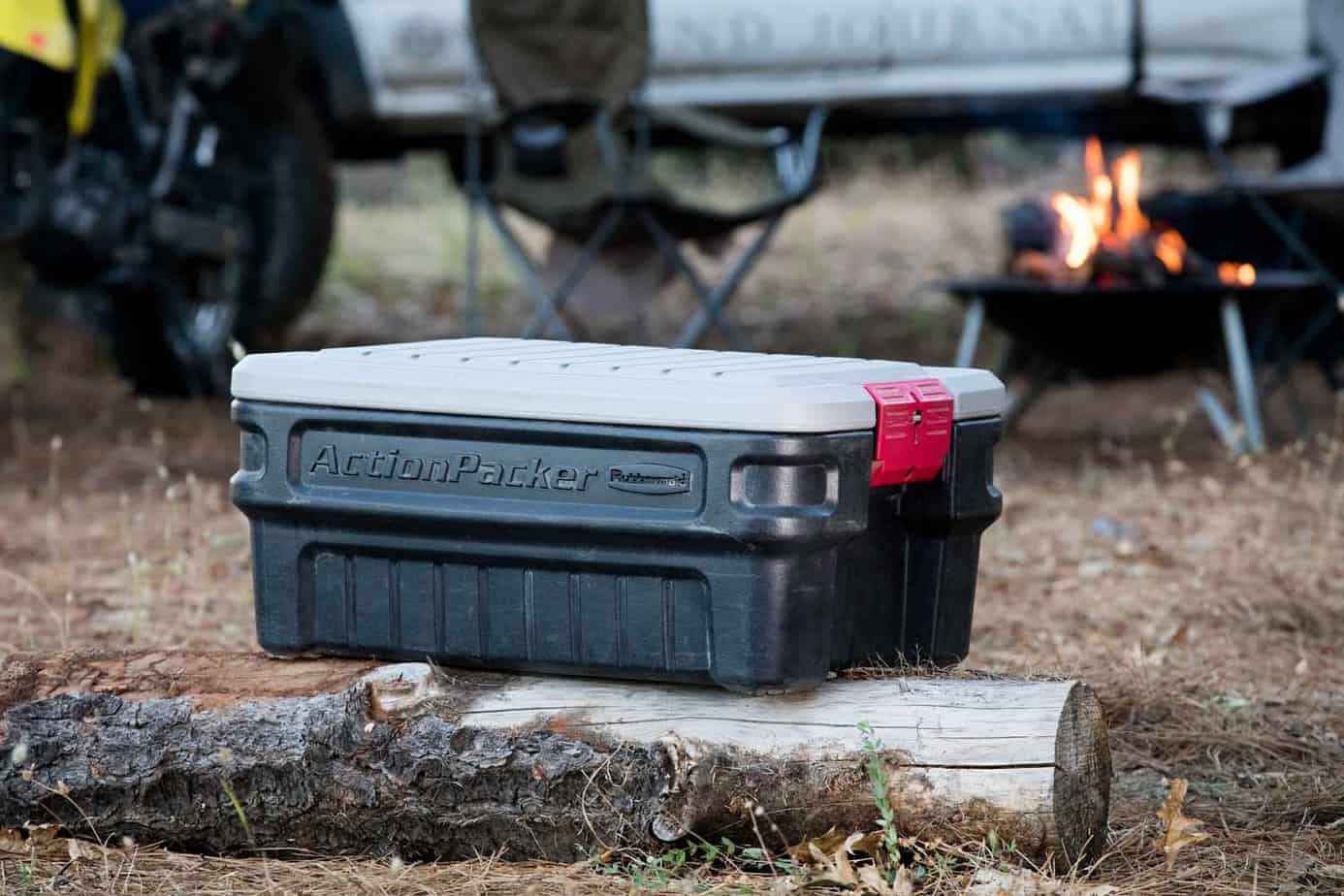
Although I’ve heard many in the overland circle scoff at the generic, light-duty, get-em-anywhere ActionPacker with a condescending brow, I can tell you that considering the nominal price they are a great value. They are not waterproof, dustproof, or bearproof, but they do a pretty good job at fending off the elements (save an inspection by a grizzly). I purchased two of their short versions in the ’80s and carried them on an exterior rack for 2 decades; I have another in the back of my Tacoma. They have been dropped, used as stepping stools and chairs, and have stored everything from cookware and sundries to spare parts and sleeping bags.
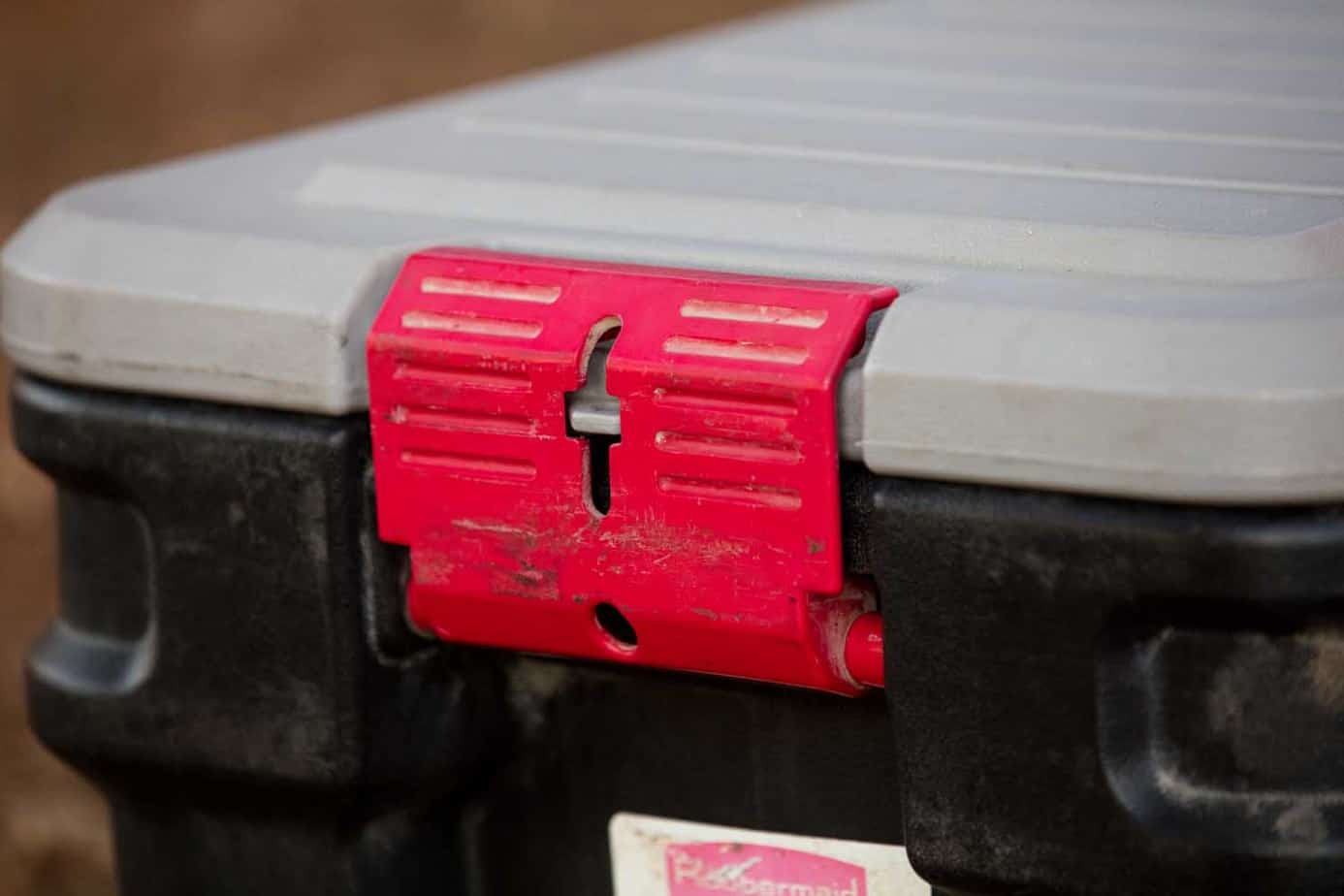
The ribbed polypropylene base is more durable than most comparably priced products, and lockable latches at each end snap tight. Sizes range from that of a small cooler (8 gallons) to a large steamer trunk (48 gallons); the larger units feature a hinged lid and single latch. I’ve stuffed ActionPackers full of camp gear and checked them on flights to fly-in-and-drive treks many times. They are extremely light, leaving more on the scale for equipment. There are a few shortfalls though. They are not ATA (Air Transportation Association) Spec 300 or IP certified, and due to the tapered sides and general form, interior volume is reduced and the packing of gear is a bit fiddly. However, if you are in need of an inexpensive storage option, the ActionPacker is a worthwhile choice. Made in USA, 1-year warranty. rubbermaid.com, 888-895-2110
Pros
Cost
Durable
Lockable
Cons
Not waterproof
Lack ATA or IP certification
Tapered walls reduce interior volume
Front Runner Wolf Pack, Cub Pack, and Flatpack $40, $37, $30
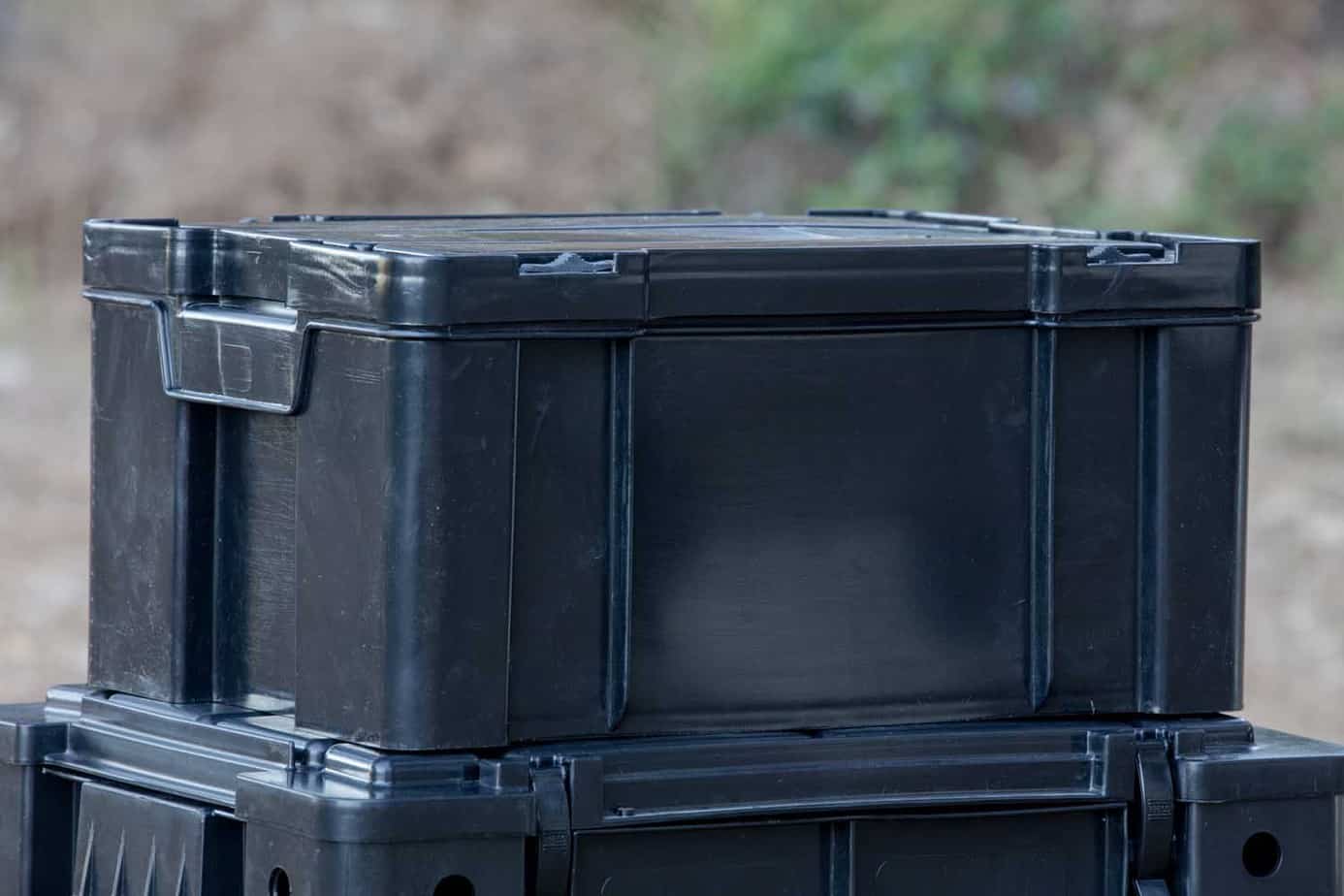
Front Runner should be a familiar name to Overland Journal readers. We’ve counted on many of their products during multiple backcountry adventures, and the Wolf Pack storage crates traveled with the Expeditions 7 team around the world. This trio, the Wolf Pack, Cub Pack, and Flatpack are exactly what we would expect from the creative minds at Front Runner. The system’s base unit, the Wolf Pack, is injection molded from high-density polyethylene (HDPE) and measures approximately 20 by 16 by 9 inches. Its vertical sides provide for efficient packing with other square or rectangular items and limit the loss of internal volume. The lid and base are perfectly formed to allow the stacking of multiple cases with minimal shifting of cargo. On each end of the removable lid are two plastic snap-lock latches (metal latches are available for $10). Although the Wolf Pack is not waterproof, the overlapping lid/base interface does a good job of keeping the elements at bay.

The Cub Pack is the Wolf Pack’s younger sibling. It too features rugged HDPE construction, vertical sides, overlapping closure, and a removable lid. Latches are low-profile slip-locks on the lid, which are also molded to “nest” with the base of another Cub Pack for stacking. As with its big brother, integrated handles on the long ends make for an easy portage from a vehicle to the galley. Another feature I like is that the Cub Pack is designed to fit perfectly inside the Wolf Pack and many other common drawer systems. This is another great option for a fly-in-and-drive trip: fill the Cub with your mess kit, ship it inside the Wolf Pack, and when you arrive you have an extra storage bin for food or equipment. Both of these units are tough enough for nearly any use, though I would not suggest standing on one.

The Flatpack is where this system gets fun. This collapsible, padded liner expands to fits perfectly inside the Wolf Pack. Velcro strips around the base form a secure bond, and a large, wraparound YKK zipper seals the top. This inexpensive addition will provide plenty of protection for more fragile items or camera equipment. For a little over $100, this combination will provide years of service. The Wolf and Cub Packs are made in South Africa, and the Flatpack made in China, 2-year warranty. frontrunneroutfitters.com, 866-840-0321
Pros
Integrated storage system
No-shift stacking
Sturdy construction
Cost
Cons
Not waterproof
Lacks ATA or IP certification
Pelican Spacecase 550 $130-$250
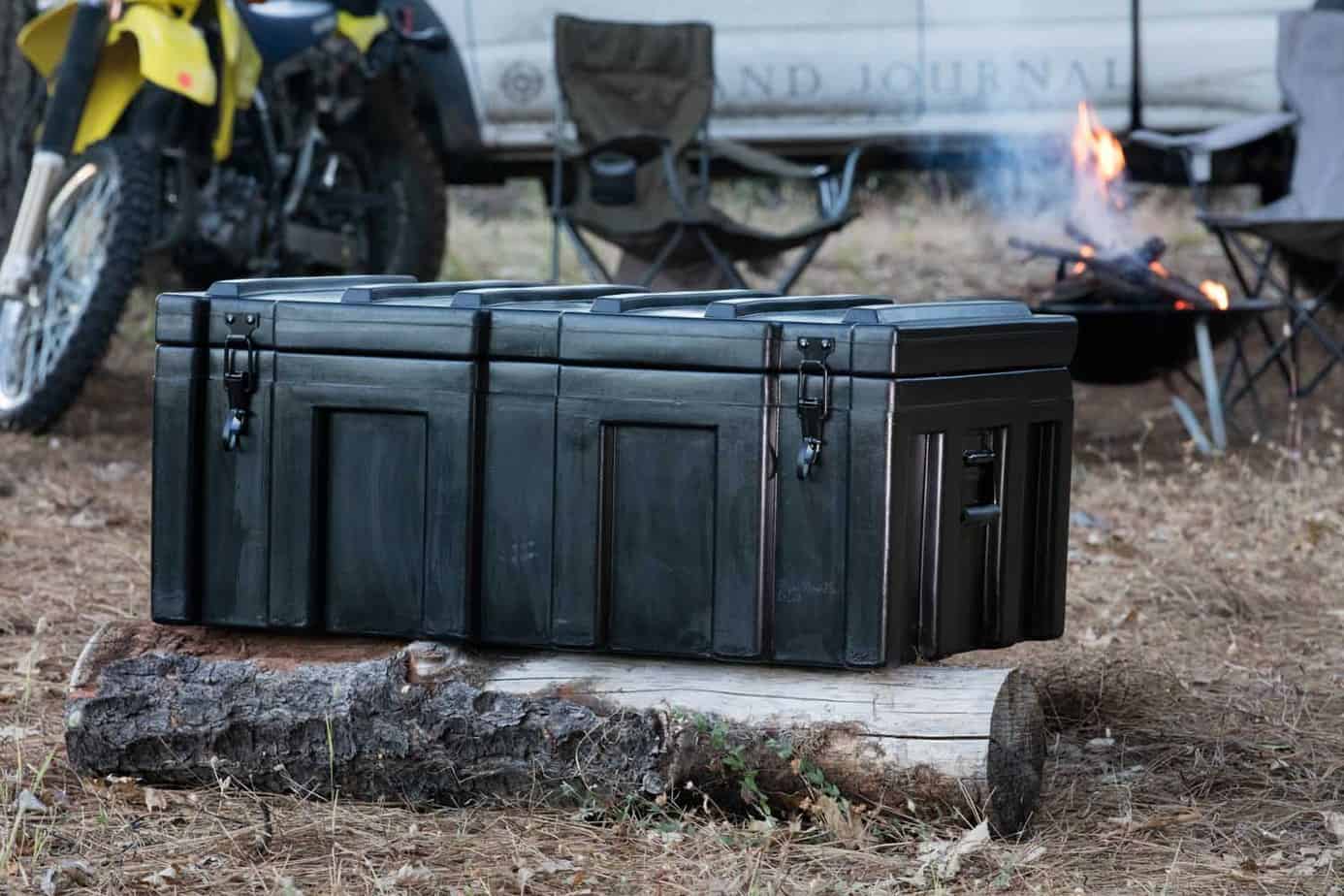
The Spacecase is another product we’ve used with regularity, but until Pelican began importing them to the U.S. earlier this year, they were only available in Australia. Highly regarded in the Land Down Under, the Spacecase is standard equipment for overlanders heading to the continent’s great Red Center, as well as competitors in the famed Outback Challenge. I depended on two of them to keep my gear dry under torrential downpours during a 2-week trek across the Simpson Desert. Never did I eat a soggy sandwich or slip into a soaked sleeping bag.

Injection-molded from UV-resistant, food-grade polyethylene (PE) plastic, the 550 is engineered with a ribbed lid and sides that create an extremely rigid frame—PE is also quite impervious to grime, water, oil, and most chemicals. Because gravity happens, material at the corners is 20 percent thicker than the rest of the case. Being made of plastic with a degree of elasticity, the Spacecase is more likely to flex than crack if dropped on a corner. When using more than one case, the ribs in the lid interlock with a recess in the base of the second case, a design that provides no-slip stacking. Insulated handles at each end, along with front-mounted steel latches, are recessed, which reduces the possibility of snagging on other gear. Latches have a lock eyelet, but there is also a built-in, tethered pin that will keep them from opening accidentally. The rear hinges and all other hardware are zinc plated and E-coated black.
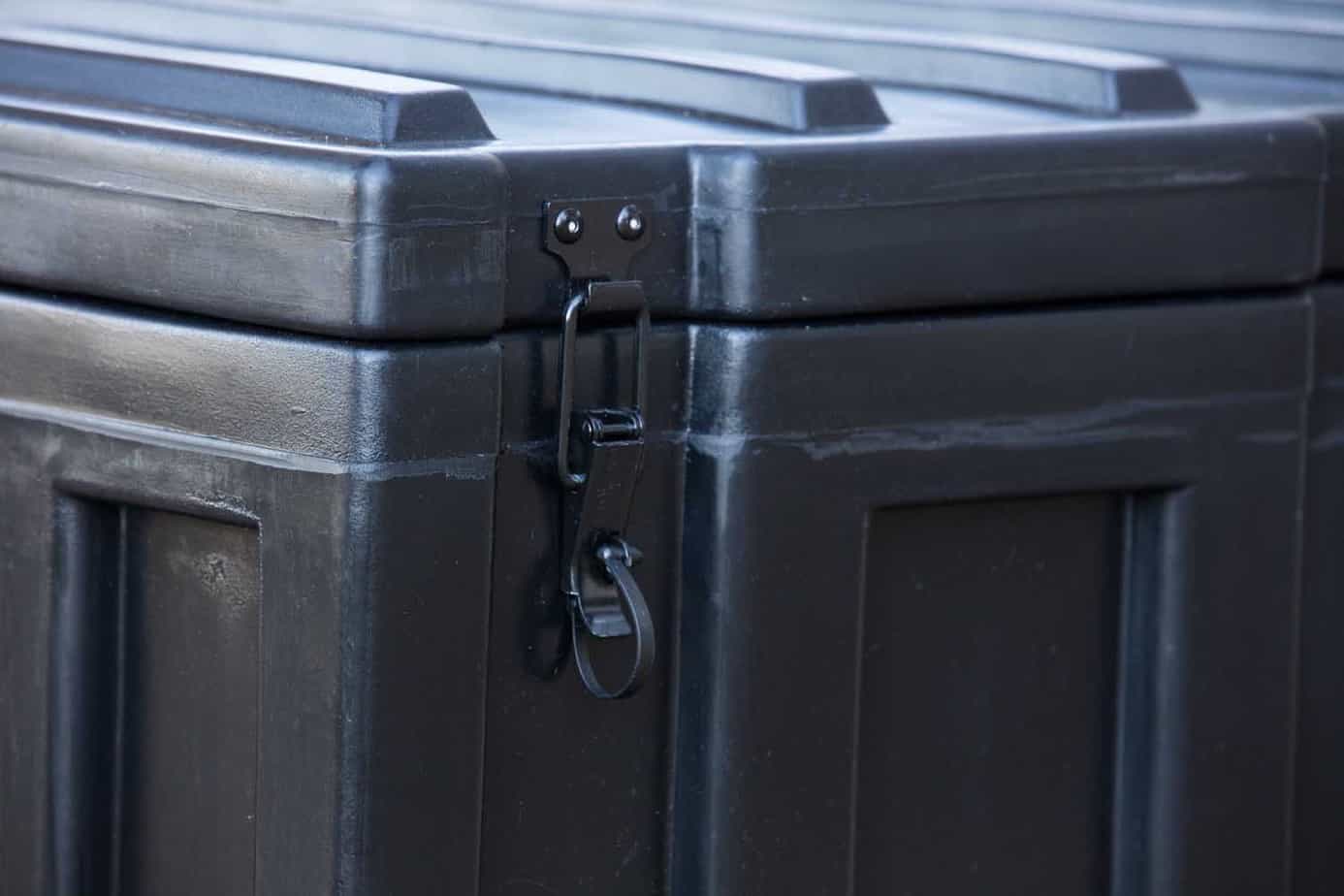
The 550 series is available in three sizes and there are an array of optional accessories including a drain plug, vent, pressure relief valve, humidity indicator, interior trays, and even a gas strut. The only downside to this product is that due to the ribbed design, the interior dimensions are a few inches smaller than the exterior size. I feel that this is a minor price to pay for its excellent utility. As with most things Aussies design, the Spacecase is tough as nails. You won’t go wrong stuffing your kit in one of these. Made in Australia, 3-year warranty. pelican.com, 800-473-5422
Pros
Rugged construction
Weatherproof
Numerous accessories
Cons
Interior/exterior size differential
Lack ATA or IP certification
Alu-Box Pro Series $205-$795
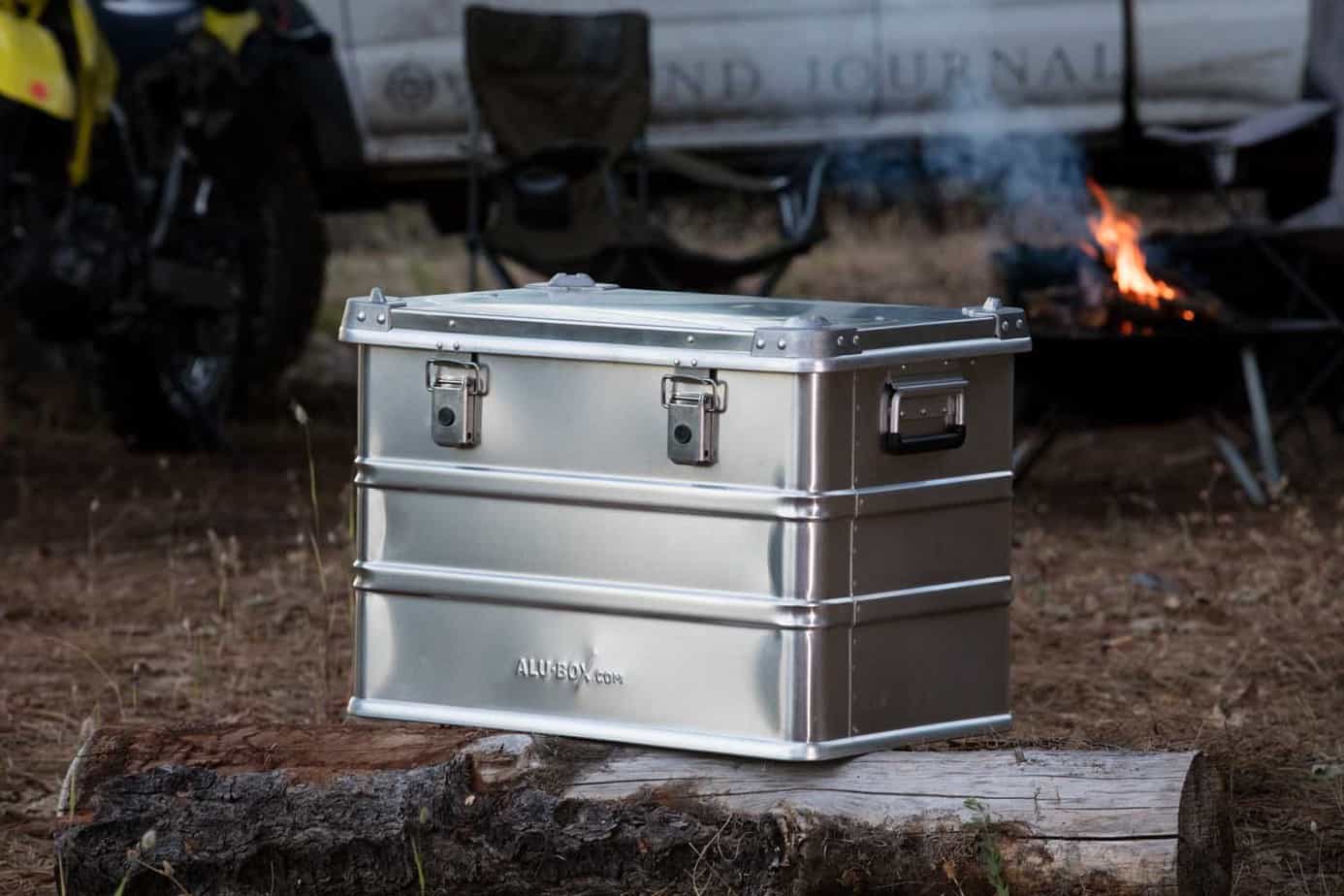
The Alu-box is another product the Overland International staff has used extensively in the field. They are regular complements to our standard gear, and Publisher Scott Brady has depended on Alu-Box cases to keep his supplies clean and dry during treks through Kenya, Uganda, and South Africa. Family owned and operated, this Denmark-based company has maintained an ethos of quality since its inception in 1999.
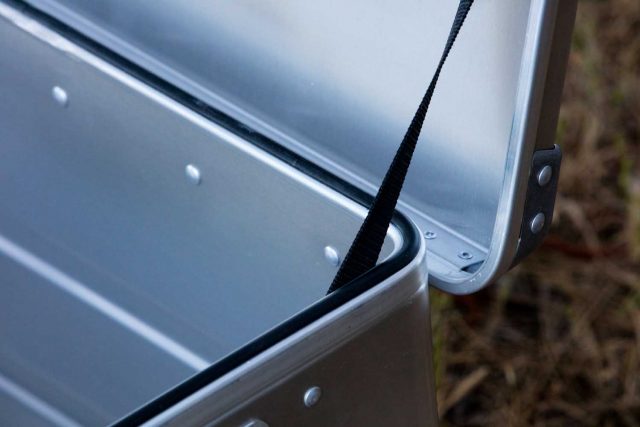
The Pro series is their premium line and offers a multitude of features that make it a solid choice for vehicle-based travel. The body is rolled from 1-millimeter anodized EN AW-5754 aluminum plate (AlMg3 chemical designation), and seams are riveted and sealed with silicone at the inner lip. The combination is nearly impervious to weather, ultraviolet rays, and most chemical compounds. Dual bands, or ribs, wrap around the exterior to enhance structural integrity, as do the extruded aluminum base and upper rim. A thick rubber gasket is recessed into the rim and provides an airtight seal when the lid is closed. Latches are also aluminum, snap closed with purpose (keep your fingers out of the way), and have an eyelet for a lock.
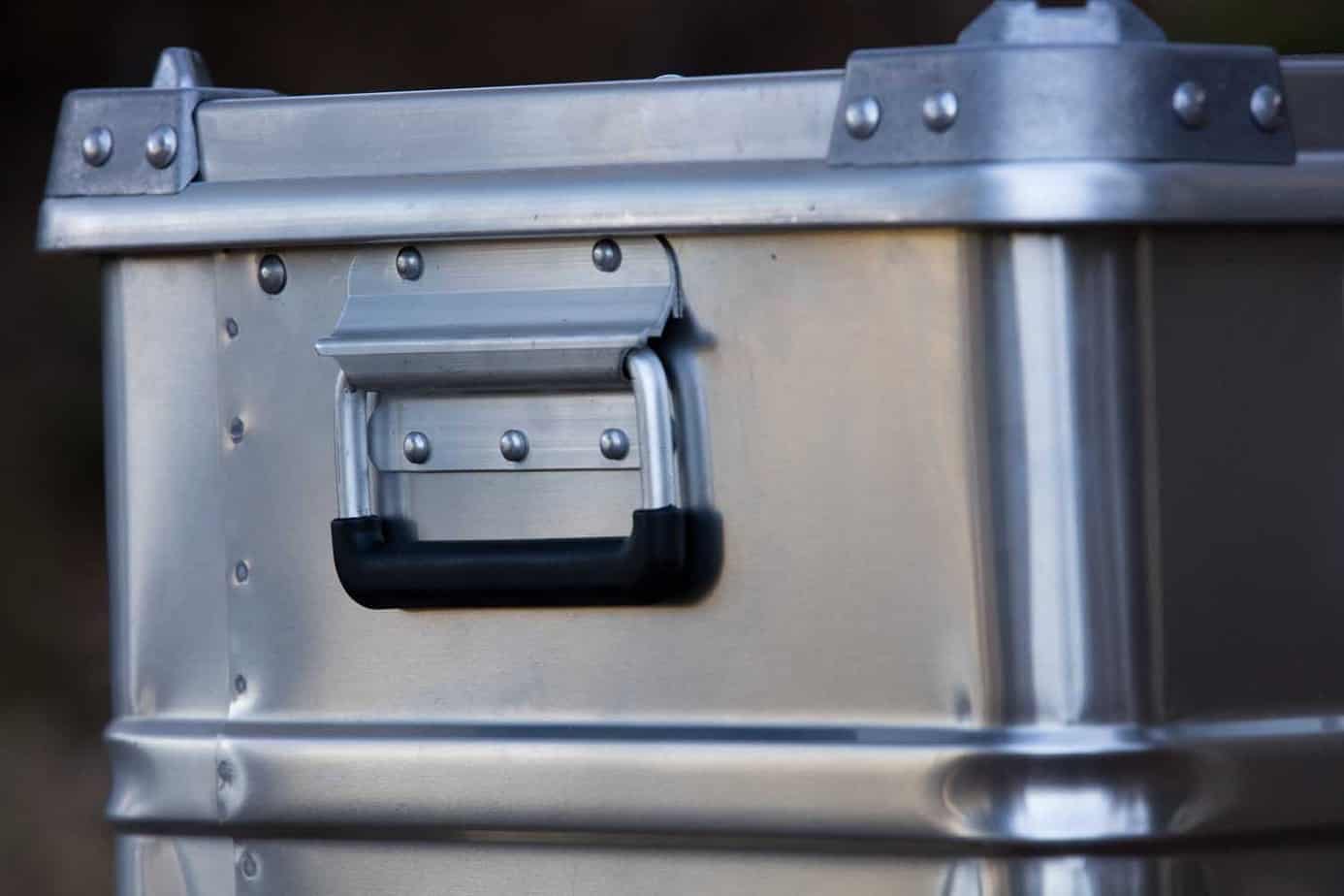
On either end are spring-loaded aluminum handles with insulated holds—a nice feature when it is a chilly -238°F or melt-your-tires 302°F outside (the advertised temperature range for this case). Heavy-duty cast aluminum protector posts grace each corner of the lid, which allow for the stacking of cases with minimal shifting. There are 21 sizes ranging from 29 to 690 liters, offering a maximum payload of 7.7 to 485 pounds. The unit we have (ABA73-liter) measures 22.8 by 15 by 15.75 inches, is the right size for a Jeep or Land Rover, has a maximum load of 220 pounds, and weighs in at 11.7 pounds. Distributed in the U.S. by Equipt Expedition Outfitters. Made in Denmark, 1-year warranty. alubox.com, equipt1.com, 866-703-1026
Pros
Premium construction
Weather resistant
Available foam liner
Optimal interior volume
Cons
Cost
Aluminum can rub off onto stored items
Zarges K470 $205-$1,194

Founded in Stuttgart, Germany, in 1933, Zarges is the elder statesman of the aluminum storage case sector. In the 2017 Summer Issue I expounded on the company’s K470 line and shared that we used them extensively during our crossing of Antarctica. They ferried our tents, tools, food, and spare parts across nearly 6,000 kilometers of the world’s coldest, driest, and windiest continent. Since then, I have put them in service on treks to Utah, across the arid deserts of Nevada, and down 1,000 miles of desolate two-tracks in Baja, Mexico. They are, without question, worthy of recognition as a Best of Breed storage option.
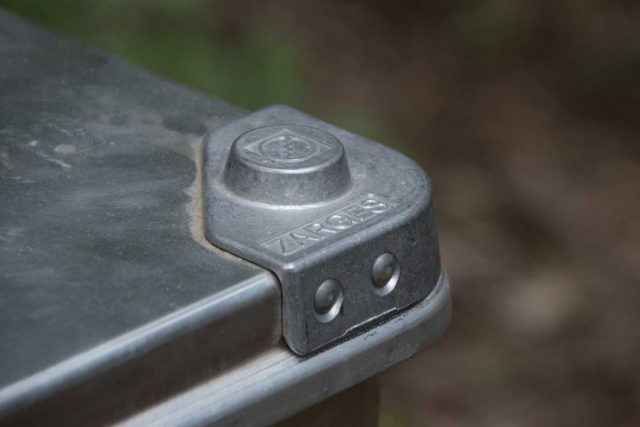
The K470 is rugged, lightweight, and weatherproof. Formed from 1-millimeter or 1.5-millimeter aluminum (depending on case size), sides and corners are beaded (ribbed) to enhance dimensional rigidity. Connecting seams are sealed and riveted, and a polyurethane gasket provides an airtight barrier to the outside world (IP54 certification is standard, IP65 is optional). Two webbed straps keep the lid in the open position and stainless steel latches cinch it down tight when closed. Each latch has a lock eyelet (.25 inch) to keep sticky hands at bay or to secure contents for shipping. Speaking of shipping, the K470 is ATA Spec 300 Category 1 approved, and meets MIL-STD-810 and 461 standards for structural integrity. As with the Alu-box, this case has an operating temperature range of -238°F to 302°F.
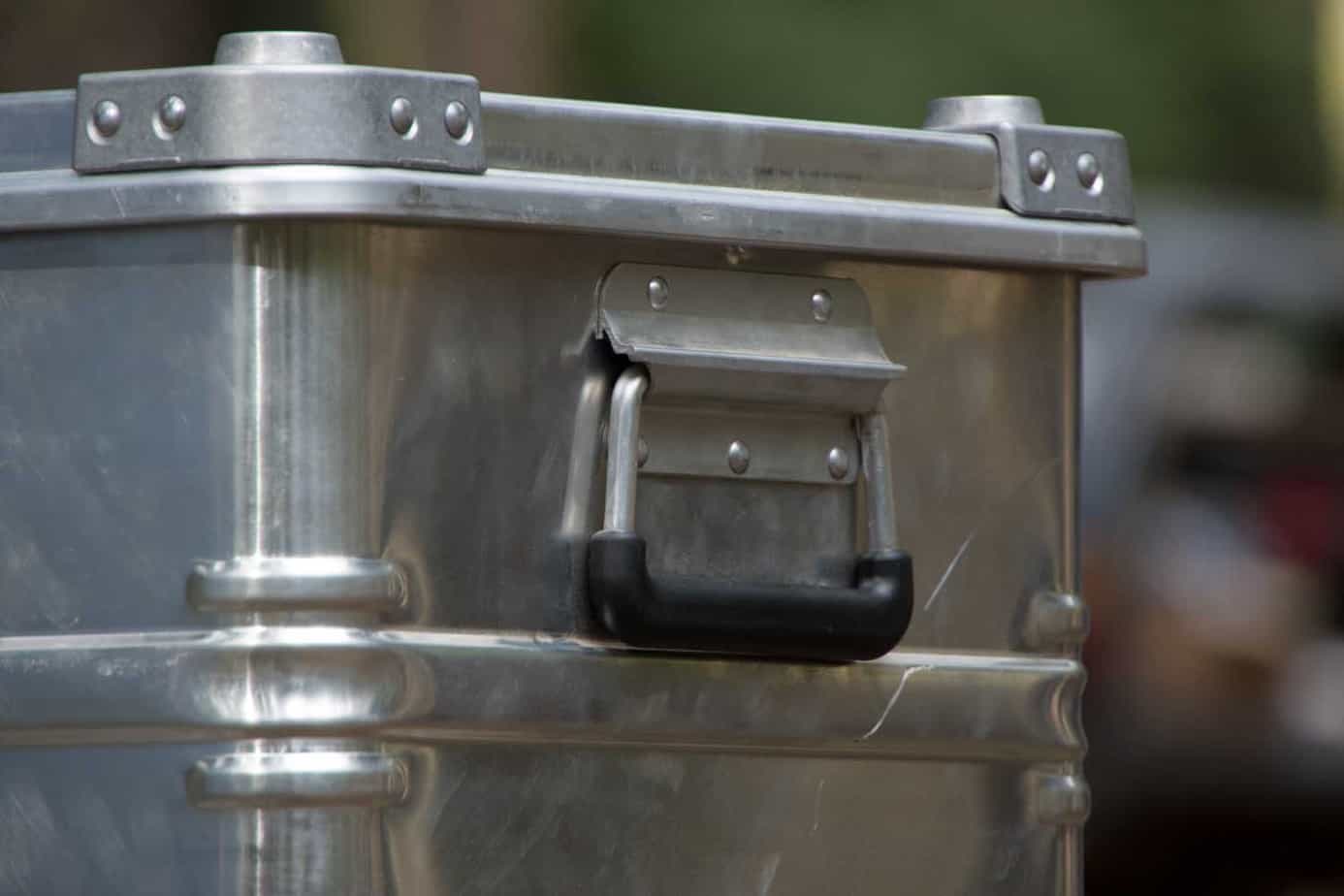
Spring-loaded handles on each end are ergonomically positioned for an easy hand-carry, and a full-length stainless steel piano hinge rounds out the build. Because the K470 is designed for integrated use, the lid features cast aluminum corner posts that allow the case to be stacked, or nested with other cases of the same dimensions. There are 25 sizes available (ranging from that of a small carry-on to more than 5 feet in length), and Zarges engineers can design one-off units to your specifications.
We sourced ours from their U.S. distributor, Bauer Cases, which offers Stratocell closed-cell foam liners which are cut by CNC water jet. This has provided excellent protection for stored gear and adds a measure of noise abatement. Although Zarges cases lean toward the higher end of the price spectrum, the cost reflects the level of quality. Made in Germany, France, and Hungary. zargescases.com, 888-357-6285, bauercases.com, 800-301-2212
Pros
Premium construction
ATA Spec 300 Category 1 and IP54 certified
Available foam liner
Optimal interior volume
Cons
Cost
Aluminum can rub off onto stored items



